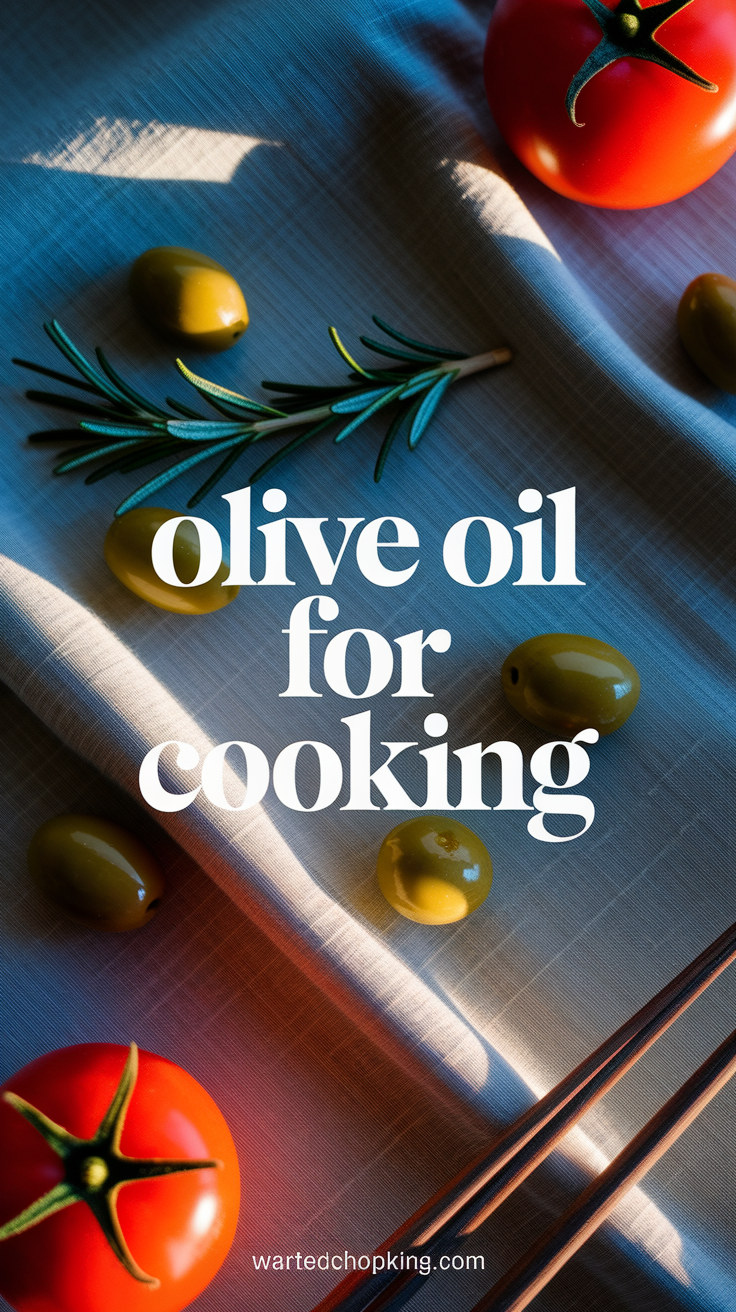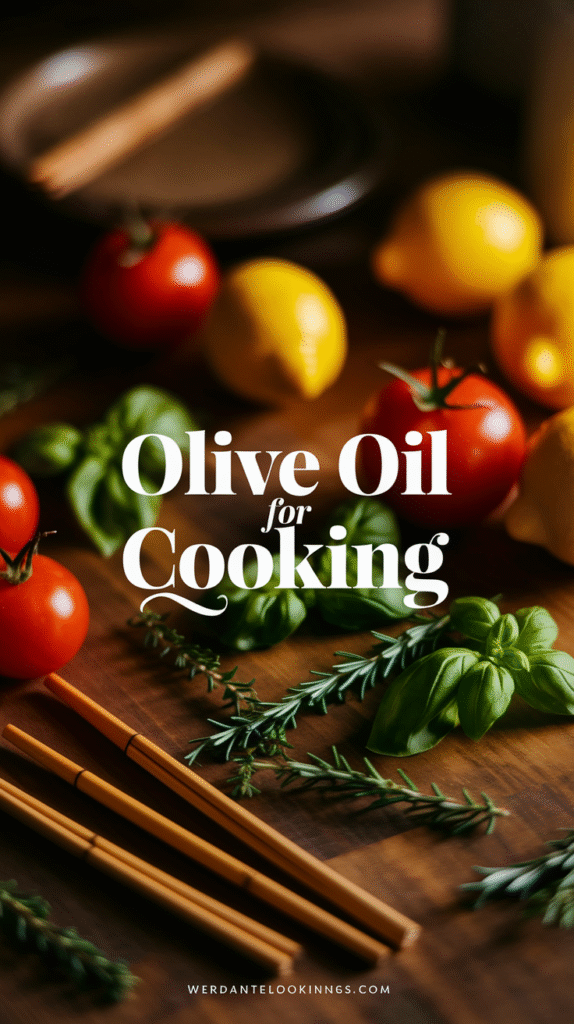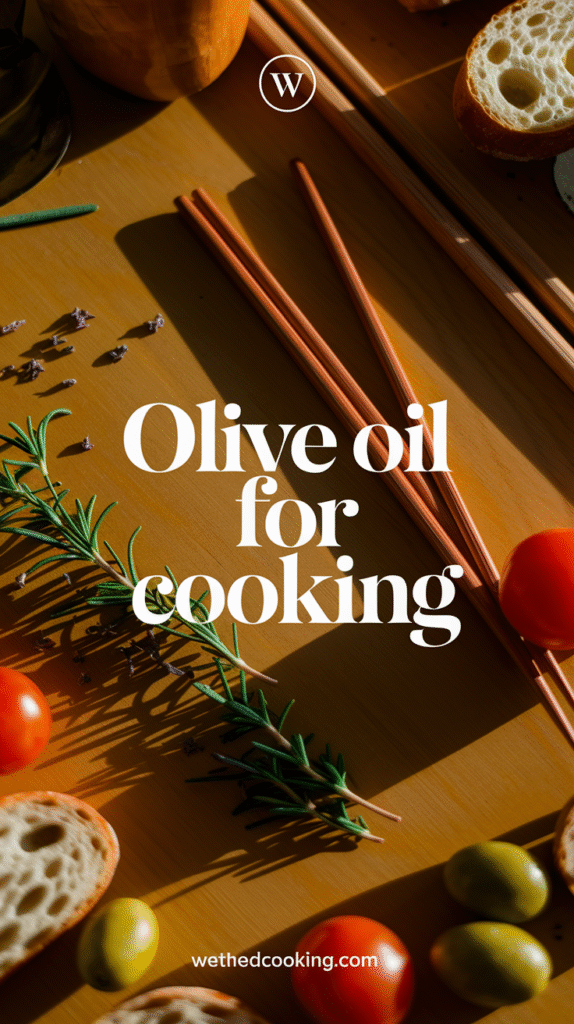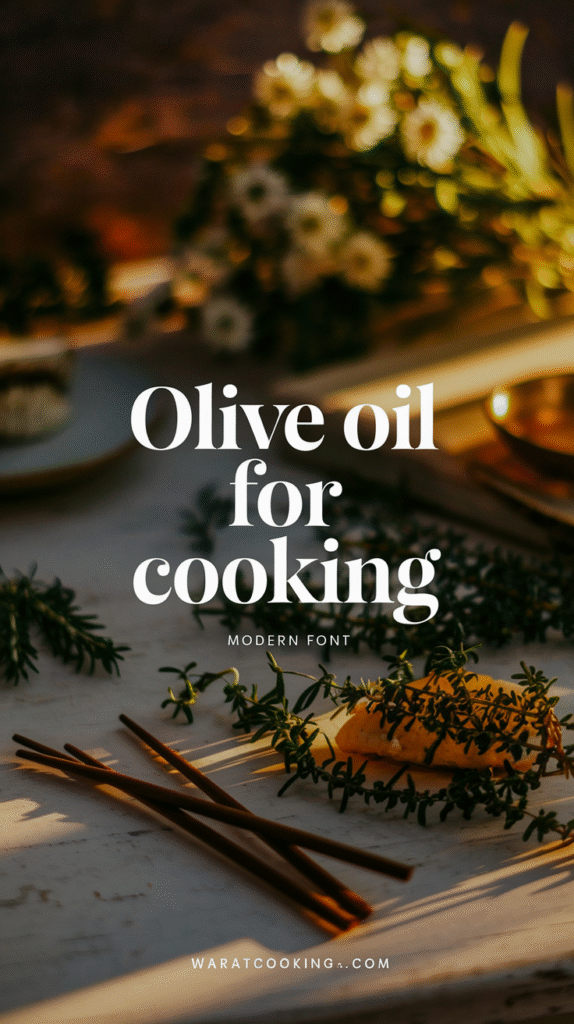Olive oil has gained popularity not just as a salad dressing but also as a fantastic option for cooking. When considering oils for your cooking needs, extra virgin olive oil should be at the top of your list. Its remarkable health benefits, flavor enhancement, and versatile uses make it a preferred choice for both amateur home cooks and professional chefs alike.
First and foremost, the health benefits of olive oil are well-documented. Rich in monounsaturated fats, it is known to support heart health by lowering bad cholesterol levels. This can significantly reduce the risk of heart disease. Additionally, olive oil is packed with antioxidants, which help fight inflammation in the body. Research even suggests that its anti-inflammatory properties can aid in chronic disease prevention, making it an essential item in your kitchen.
Flavor is another crucial aspect that makes olive oil stand out. Its unique taste profile, ranging from fruity to peppery, can elevate the simplest of dishes. Whether you’re sautéing vegetables, roasting meats, or preparing a marinade, adding a drizzle of olive oil can enhance the overall flavor, making your meals more enjoyable.
Many people wonder if olive oil is suitable for high-heat cooking. While it has a lower smoke point compared to some oils, high-quality extra virgin olive oil can be used safely for moderate heat cooking. The smoke point of extra virgin olive oil is approximately 375°F (190°C), which is adequate for most sautéing and baking tasks. However, for deep frying or high-heat cooking, you might want to consider refined olive oil, which has a higher smoke point around 465°F (240°C).
| Type of Olive Oil | Smoke Point | Best Uses |
|---|---|---|
| Extra Virgin Olive Oil | 375°F (190°C) | Sautéing, roasting, dressing |
| Pure Olive Oil | 465°F (240°C) | Frying, baking |
One of the distinctive benefits of using olive oil for cooking is its ability to retain nutrients in the foods you prepare. When you cook with olive oil, you enhance the nutritional profile of your vegetables, meats, and grains. The oil helps in the absorption of fat-soluble vitamins such as A, D, E, and K, allowing you to make the most of the nutrients in your meals.
Additionally, olive oil’s versatility means it can be used in a variety of cuisines—from Mediterranean to Asian. You can drizzle it on pasta, use it for frying fish, or even incorporate it into homemade bread. The options are endless, and experimenting with it in different recipes can lead to delightful culinary discoveries.
For those who are health-conscious, using olive oil in your cooking can lead to a reduction in calorie intake compared to using heavier creams or butters. This is particularly beneficial for individuals looking to manage their weight while still enjoying flavorful meals. Combining olive oil with herbs and spices can also create delicious dressings and marinades without piling on extra calories.
Making the switch to olive oil is also an eco-friendly choice. The cultivation of olive trees has a lower environmental impact compared to many other oil-producing crops. By choosing olive oil, you’re not just benefiting your health, but also supporting sustainable agriculture practices.
Olive oil into your cooking routine can lead to significant improvements in both health and taste. The key is to choose high-quality olive oil, ideally labeled as “extra virgin,” which indicates the highest level of quality and purity. Always store it in a cool, dark place to preserve its flavor and nutritional benefits.
If you’re ready to explore the delicious world of cooking with olive oil, consider visiting websites like Healthline for further insights and recipes. Making olive oil a staple in your kitchen will open up numerous culinary opportunities while promoting your well-being. Trust us; your taste buds— and your body—will thank you!
Olive Oil vs. Other Cooking Oils: Which is Healthier?
When considering healthier options for cooking, the choice of oil can significantly impact both flavor and nutrition. Among the many oils available, olive oil stands out as a popular option. But how does it measure up against other cooking oils? Let’s dive into the characteristics, benefits, and considerations of olive oil in comparison to other common cooking oils.
Understanding Olive Oil
Olive oil is derived from the fruit of the olive tree. It is packed with monounsaturated fats, which are heart-healthy. Extra virgin olive oil, the highest quality, is made from the first pressing of olives and boasts high levels of antioxidants, vitamins, and healthy fatty acids. Its flavor can range from mild to robust, making it versatile for various dishes.
The Benefits of Olive Oil
Here are some of the key benefits of cooking with olive oil:
- Heart Health: Olive oil can lower bad cholesterol levels and reduce the risk of heart disease.
- Antioxidant Properties: It contains antioxidants that fight inflammation and oxidative stress.
- Healthy Fats: The monounsaturated fats found in olive oil are believed to support weight loss and metabolic health.
- Versatility: Olive oil is great for sautéing, drizzling, and baking.
Comparing Olive Oil to Other Cooking Oils
When evaluating cooking oils, it’s essential to consider smoke points, nutritional value, and taste profiles. Here’s a comparison of olive oil with some common alternatives:
| Cooking Oil | Smoke Point (°F) | Health Benefits | Flavor Profile |
|---|---|---|---|
| Olive Oil | 375-410 | Heart-healthy monounsaturated fats | Fruity to peppery |
| Coconut Oil | 350 | Medium-chain triglycerides for energy | Sweet, tropical |
| Canola Oil | 400 | Omega-3 and Omega-6 fatty acids | Neutral |
| Vegetable Oil | 400-450 | Varies by source; often less healthy | Neutral |
Caloric and Nutritional Comparison
Below is a breakdown of the calorie content and fat composition per tablespoon of each oil:
| Cooking Oil | Calories | Total Fat (g) | Saturated Fat (g) |
|---|---|---|---|
| Olive Oil | 119 | 13.5 | 1.9 |
| Coconut Oil | 117 | 13.6 | 11.8 |
| Canola Oil | 124 | 14 | 1 |
| Vegetable Oil | 124 | 14 | 1.5 |
Choosing the Right Oil for Your Cooking Needs
Olive oil is often the go-to choice for healthier cooking due to its unique benefits. However, the best oil depends on the specific culinary application:
- If you’re roasting at high temperatures, avocado oil with its high smoke point might be suitable.
- For baking or dressings, olive oil’s distinct flavor can enhance your recipes.
- For a neutral flavor in frying, consider canola or vegetable oil.
For more information about choosing the best oils for cooking, you can visit Healthline or check out Medical News Today.
While olive oil may not be the only healthy cooking option, it remains a strong contender for its multitude of benefits, essential nutrients, and rich flavor. By understanding the properties of olive oil compared to other cooking oils, you can make informed choices that suit your health and culinary preferences.
How to Choose the Best Olive Oil for Your Kitchen
Choosing the right olive oil for your kitchen can enhance your cooking experience and improve the flavor of your dishes. With numerous options available, it can be confusing to select the best one. Here’s a helpful guide to assist you in making the right choice!
Understand the Different Types of Olive Oil
Before making a selection, it’s essential to know the various types of olive oil:
- Extra Virgin Olive Oil: This is the highest quality olive oil, made from the first pressing of fresh olives. It retains the most flavor and nutrients, making it ideal for dressings and drizzling.
- Virgin Olive Oil: Slightly lower in quality than extra virgin, this oil still has good flavor and low acidity but may have minimal defects.
- Refined Olive Oil: This oil undergoes processing, which removes some flavor and aroma. It has a higher smoke point, making it suitable for frying.
- Light Olive Oil: Despite its name, light olive oil is not lower in calories. It refers to a lighter flavor and not a reduction in fat. This oil is typically a blended oil.
Check for Quality Indicators
Quality is vital when choosing olive oil. Look for these indicators:
- Harvest Date: Check for a harvest date on the bottle. Freshness is key, so opt for oils that were harvested within the last year.
- Origin: Authentic olive oils often indicate their origin. Look for oils from regions known for high-quality production, such as Italy, Spain, or Greece.
- Certification: Look for seals or certifications, such as the extra virgin seal that ensures quality standards.
Consider the Flavor Profile
Olive oils have varied flavor profiles ranging from fruity to grassy. Here’s how to assess flavors:
- Fruity: Offers flavors of fresh fruits, making it perfect for drizzling on salads.
- Nutty: Adds a rich, full taste, ideal for baking and roasting.
- Herbaceous: Provides an aromatic quality, excellent for marinades and sauces.
Evaluate Packaging and Storage
The packaging of olive oil affects its quality. Choose oils stored in dark glass bottles, as they protect the oil from light, which can cause it to degrade. Additionally, consider these storage tips:
- Store your olive oil in a cool, dark place away from heat sources.
- Avoid exposing it to air by keeping the bottle tightly sealed.
Determine Your Cooking Needs
Different cooking methods require different types of oil:
- Salads and Dressings: Use extra virgin olive oil for its rich, robust flavor.
- Cooking and Sautéing: Choose virgin or light olive oil, which can handle higher heat without burning.
- Finishing Touches: Again, extra virgin is perfect for drizzling over finished dishes for an added flavor punch.
Price and Value
While price does not always indicate quality, higher-priced oils are often more likely to be genuine extra virgin olive oils. Look for reputable brands and avoid bargain options, as they may contain blends or lower-quality oils. Check reliable websites for advice and recommendations to ensure value for your money.
Try Tastings and Recommendations
Whenever possible, try the oil before you buy it. Many stores offer tasting stations. Ask for recommendations from culinary experts or check online reviews from trustworthy sources. Reliable information from experts can steer you toward quality selections. Sites like Consumer Reports provide detailed findings and reviews on olive oils.
| Type of Olive Oil | Smoke Point | Best Uses |
|---|---|---|
| Extra Virgin | 320°F (160°C) | Dressings, Dipping |
| Virgin | 420°F (215°C) | Sautéing, Baking |
| Refined | 465°F (240°C) | Frying, High-Heat Cooking |
By understanding the various types of olive oil and assessing quality indicators, you can confidently choose the best olive oil for your kitchen. Enjoy the flavorful experience olive oil brings to your cooking!
The Different Uses of Olive Oil in Cooking and Beyond
Olive oil is a staple in kitchens around the world, renowned for its flavor, health benefits, and versatility. From sautéing and grilling to drizzling over salads, its uses extend beyond mere cooking. Understanding the various applications of olive oil can elevate your culinary experience and provide additional uses for your everyday life.
Cooking with Olive Oil
When it comes to cooking, olive oil stands out for its rich flavor and health benefits. Here are some popular ways to incorporate it into your meals:
- Sautéing: Olive oil’s high smoke point makes it suitable for frying vegetables, meats, and fish. It adds a delightful taste while retaining nutrients.
- Grilling: Use olive oil to marinate meats or vegetables before grilling. It not only enhances flavor but also keeps food moist.
- Drizzling: A splash of extra virgin olive oil over salads, pasta, or even roasted vegetables adds a burst of flavor. It’s simple yet elevates the dish significantly.
- Baking: Olive oil can replace butter or other oils in baking recipes, lending a unique taste to cakes, breads, and muffins.
- Dipping: Serve olive oil as a dip for fresh bread. Adding herbs and spices enhances the experience.
Health Benefits of Olive Oil
Not only is olive oil delicious, but it also boasts numerous health advantages. Here’s why you should consider using it more often:
- Heart Health: Olive oil is rich in monounsaturated fats, which can help lower bad cholesterol (LDL) and reduce the risk of heart disease.
- Antioxidants: It contains antioxidants that fight free radicals in the body, potentially lowering the risk of chronic diseases.
- Anti-Inflammatory Properties: The compounds in olive oil can help reduce inflammation, which is linked to many health issues.
Olive Oil Beyond Cooking
Olive oil is not just limited to cooking; it has a variety of uses that can enhance your everyday life:
- Skin Moisturizer: Use olive oil as a natural moisturizer for your skin. It’s gentle and suitable for all skin types.
- Hair Conditioner: Olive oil can be used as a deep conditioner. Apply it to your hair, leave it on for a while, and rinse for softer, shinier locks.
- Furniture Polish: Mix olive oil with vinegar to create a natural furniture polish, giving wood a beautiful shine.
- Deodorizing Agent: Olive oil can help remove sticky residues on kitchen surfaces and tools, making cleaning easier.
Choosing the Right Olive Oil
When selecting olive oil, you’ll encounter various types, including extra virgin, virgin, and refined. Here’s a brief overview of each:
| Type | Description | Best Uses |
|---|---|---|
| Extra Virgin | Highest quality, cold-pressed without chemicals | Dressings, drizzling, dipping |
| Virgin | Made from lower-quality olives, still cold-pressed | Cooking and baking |
| Refined | Processed with chemicals, more neutral flavor | High-heat cooking |
For more in-depth information on the types of olive oil, consider visiting Olive Oil Times. They offer extensive resources on olive oil, including health benefits, recipes, and industry news.
Olive oil into your cooking and daily routines can not only enhance flavors but also provide various health benefits. Whether you’re making a simple salad dressing or utilizing it in beauty and home care, olive oil is a versatile and valuable ingredient in your pantry.
For more tips on using olive oil, check out Olive Oil Source for best practices and guides.
Common Myths About Olive Oil Debunked
Many people use olive oil in their cooking without fully understanding its properties. Unfortunately, some myths persist and can lead to confusion or misinformation. Let’s explore some of these common myths about olive oil and clarify the facts.
Myth 1: Olive Oil Can’t Be Used for High-Heat Cooking
A widespread belief is that olive oil has a low smoke point and shouldn’t be used for high-heat cooking. While it’s true that extra virgin olive oil has a lower smoke point than some oils, it can still withstand moderate to high temperatures. Extra virgin olive oil has a smoke point ranging from 350°F to 410°F, making it suitable for sautéing, roasting, and baking. Thus, you can enjoy the robust flavor and health benefits without worrying as long as you maintain reasonable temperatures.
Myth 2: All Olive Oils Are the Same
Not all olive oils are created equal. Virgin olive oil, extra virgin, and refined olive oil all have different processing methods and flavor profiles. Extra virgin olive oil is derived from the first pressing of olives and is unrefined, retaining most of its natural flavors and antioxidants. Regular olive oil is often a blend of refined and virgin oils, while pure olive oil undergoes more processing, which may strip away some health benefits. Choosing high-quality extra virgin olive oil is key for both flavor and nutritional value.
Myth 3: Olive Oil Is Always Healthy
While olive oil has many health benefits, like being rich in monounsaturated fats and antioxidants, it’s important to consume it in moderation. Like all fats, olive oil is calorie-dense, with about 120 calories per tablespoon. Relying solely on olive oil for your fat intake without balancing it with other healthy fats can lead to excess calorie consumption. It is essential to include a variety of healthy fats in your diet, such as avocados, nuts, and seeds.
Myth 4: Olive Oil Should Always Be Stored in the Refrigerator
Some believe that refrigerating olive oil is the best way to preserve its freshness. In reality, the fridge can cause the oil to solidify, creating a cloudy appearance and altering its flavor. The best way to store olive oil is in a cool, dark place, away from heat and light, ideally in a pantry or cupboard. When properly stored, olive oil can last up to two years, but it’s best to check for freshness before use.
Myth 5: Cooking with Olive Oil Destroys Its Nutritional Benefits
Another common misconception is that cooking with olive oil negates its health benefits. While high heat can diminish some of its antioxidants, many health benefits remain even after cooking. Studies suggest that when used responsibly, olive oil retains much of its nutritional profile, offering heart-healthy monounsaturated fats and various compounds with anti-inflammatory properties.
Myth 6: Olive Oil Has a Strong Flavor That Overpowers Dishes
Some shy away from using olive oil because they believe its flavor will overpower their dishes. However, the flavor of olive oil can vary significantly based on the type and region of production. Light and delicate oils provide subtle flavors, while robust oils deliver strong, peppery notes. Depending on your recipe, you can choose an olive oil that complements your dish rather than overpowers it.
Common Myths Recap
| Myth | Fact |
|---|---|
| Can’t be used for high-heat cooking | Suitable for moderate to high heat cooking. |
| All olive oils are the same | Quality and processing methods vary greatly. |
| Always healthy | High in calories; moderation is essential. |
| Should be stored in the refrigerator | Best stored in a cool, dark place. |
| Cooks out nutritional benefits | Still retains many benefits when cooked. |
| Strong flavor | Flavor varies; choose based on dish. |
Understanding these myths is crucial for making informed choices about using olive oil in cooking. For more detailed information about olive oil and its benefits, you can visit Healthline or explore resources at Olive Oil Times.
Conclusion
Using olive oil for cooking offers a wealth of benefits that can elevate both your meals and your health. From enhancing the flavor of dishes to providing heart-healthy fats, olive oil stands out among other cooking oils for its nutritional advantages. Understanding how olive oil compares to alternatives, like vegetable or canola oil, only reinforces its status as a top choice for health-conscious cooks.
When selecting the best olive oil for your kitchen, it’s essential to look for high-quality extra virgin varieties, as they are less processed and retain more nutrients. Whether you’re sautéing vegetables, dressing a salad, or even drizzling over bread, the versatility of olive oil allows you to explore countless culinary applications.
Additionally, it’s important to clear up the common myths surrounding olive oil, particularly concerns about its stability at high temperatures. When used correctly, olive oil can withstand moderate heat, making it suitable for a variety of cooking methods.
Olive oil into your cooking not only boosts flavor but also supports a healthier lifestyle. By making informed choices about the types and uses of olive oil, you can enrich your meals while enjoying the numerous health benefits it brings. With its adaptable nature and genuine appeal, olive oil truly deserves a central place in your kitchen, encouraging delicious and nutritious cooking habits that can last a lifetime.







Leave a Reply